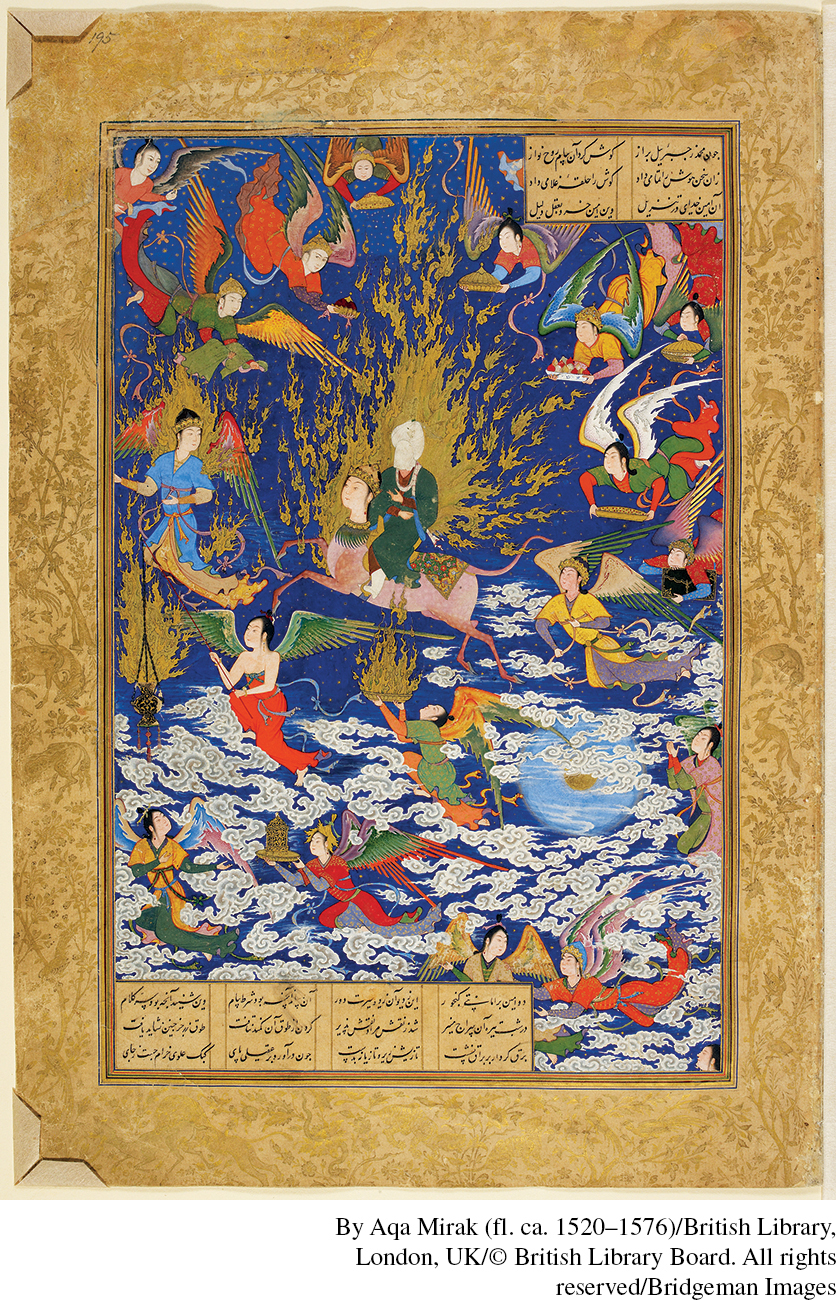9.2 The Night Journey of Muhammad
By far the most frequently portrayed event in the life of Muhammad was the miraj, the Prophet’s Night Journey, said to have taken place in 619 or 620. The Quran refers briefly to God’s taking the Prophet “from the sacred place of worship to the far distant place of worship.” This passage became the basis for a story, much embellished over the centuries, of rich and deep meaning for Muslims. In this religious narrative, Muhammad was led one night by the angel Gabriel from Mecca to Jerusalem. For the journey he was given a buraq, a mythical winged creature with the body of a mule or donkey and the face of a woman. Upon arriving in Jerusalem, Muhammad led prayers for an assembly of earlier prophets including Abraham, Moses, and Jesus. (See the fifteenth-century Persian painting illustrating this event.) Then, accompanied by many angels, Muhammad made his way through seven heavens almost into the presence of God, where, according to the Quran, “he did see some of the most profound of his Sustainer’s symbols.” There too Allah spoke to Muhammad about the importance of regular prayer, commanding fifty prayers a day, a figure later reduced to five on the advice of Moses.
From the beginning, Muslims have been divided on how to interpret this journey of the Prophet. For most, perhaps, it was taken quite literally as a miraculous event. Some, however, viewed it as a dream or a vision, while others understood it as the journey of Muhammad’s soul but not his body. The Prophet’s youngest wife, Aisha, for example, reported that “his body did not leave its place.” Source 9.2, dating from the early sixteenth century, is one of many representations of the Night Journey that emerged within Persian miniature painting.

- What significance might attach to the female head of the buraq?
- What are the accompanying angels offering to the Prophet during his journey?
- What meaning might the artist seek to convey by the image of the world below and slightly to the right of the buraq?
- What is the significance of Muhammad’s encounter with earlier prophets such as Abraham, Moses, and Jesus?
- Review the discussion of the Sufi tradition of Islam on Divisions and Controversies. How might Sufis have understood the Night Journey?